REAL VEGAS PEOPLE - John Allen: The Interview
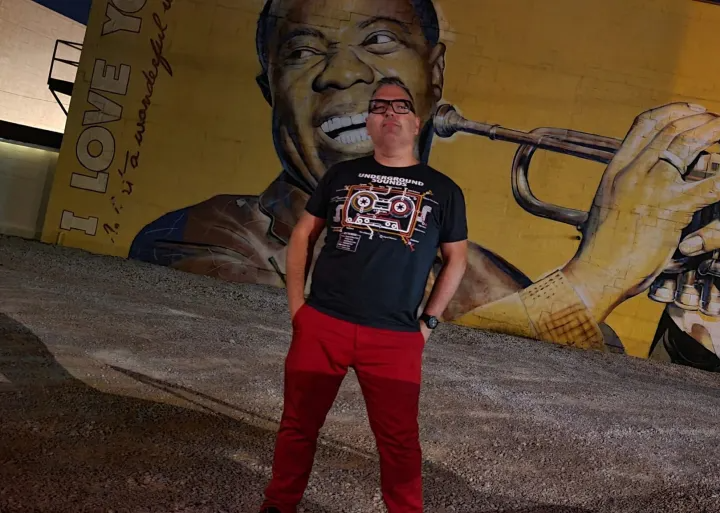
REAL VEGAS PEOPLE - John Allen: The Interview

In the second half of a two-part profile, the visionary creator of STARDUST shares influences ranging from an old Casio keyboard and Buzz Aldrin to painter Edward Hopper and the film AMADEUS.
In Part One, VEGAS 411 introduced you to John Allen, the man behind STARDUST, an audio-visual experience designed for planetariums. Today we have a one-on-one with the educator/musician. We'll discover his creative influences, how STARDUST came to be, and what his goals were in creating this celebration of the senses.
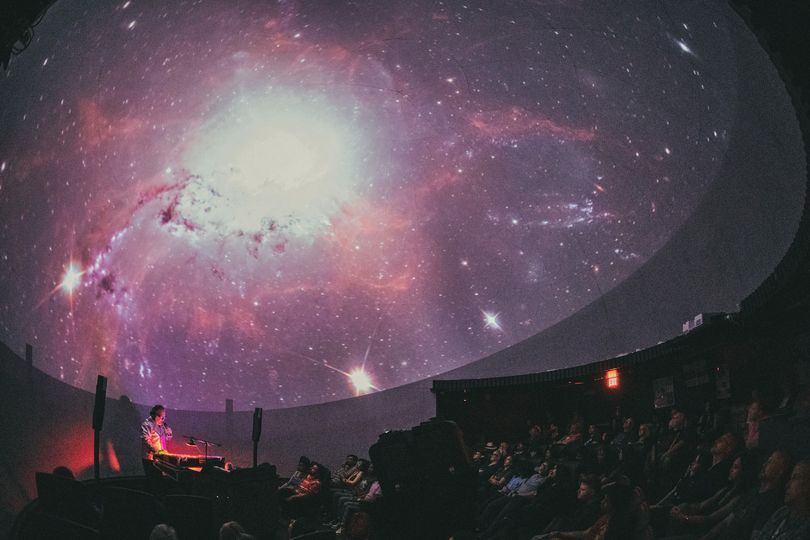 Image by PhotoFM.com
VEGAS 411 - The line between man and machine continually grows thinner. Your musical compositions join them in a way few have ever seen. Do you consider what you do to be a new form of art?
John Allen - I don’t know if I would say what I do is a new form of art. I am standing on the shoulders of the giants that came before me. I have discovered in the past few years (much to my surprise) that I am now showing those behind me the way to realizing their creative vision. (I love to teach….the classroom and stage hold equal real estate in my heart).
Image by PhotoFM.com
VEGAS 411 - The line between man and machine continually grows thinner. Your musical compositions join them in a way few have ever seen. Do you consider what you do to be a new form of art?
John Allen - I don’t know if I would say what I do is a new form of art. I am standing on the shoulders of the giants that came before me. I have discovered in the past few years (much to my surprise) that I am now showing those behind me the way to realizing their creative vision. (I love to teach….the classroom and stage hold equal real estate in my heart).
 My sound is a sum of its parts. I take a bit from so many disciplines and science. A bit of sound design, music theory, music performance, art history, film studies, history, and even anatomy! My goal always remains the same: to have the thinnest line between man and machine, and the straightest line between the audience and me.
During a live performance of STARDUST, your voice is electronically transformed into any instrument your inspiration requires. Would this be considered a form of singing, or does it have a different name?
The irony is, I don’t consider myself a ‘singer’ in the traditional sense. In customizing the gear I use, I have had to discover, include, alter, ignore, construct, and destroy a myriad of techniques to get certain sounds. I have a part of my show where I literally sing out of one nostril. (sexy…I know).
I often tell people that I have had to ‘run between the raindrops’ in this creative platform. I have a bass pedal but don’t play bass. I have a guitar pedal…I don’t even own a guitar, let alone play one. I sing in my show, but I would never call myself a singer.
My sound is a sum of its parts. I take a bit from so many disciplines and science. A bit of sound design, music theory, music performance, art history, film studies, history, and even anatomy! My goal always remains the same: to have the thinnest line between man and machine, and the straightest line between the audience and me.
During a live performance of STARDUST, your voice is electronically transformed into any instrument your inspiration requires. Would this be considered a form of singing, or does it have a different name?
The irony is, I don’t consider myself a ‘singer’ in the traditional sense. In customizing the gear I use, I have had to discover, include, alter, ignore, construct, and destroy a myriad of techniques to get certain sounds. I have a part of my show where I literally sing out of one nostril. (sexy…I know).
I often tell people that I have had to ‘run between the raindrops’ in this creative platform. I have a bass pedal but don’t play bass. I have a guitar pedal…I don’t even own a guitar, let alone play one. I sing in my show, but I would never call myself a singer.
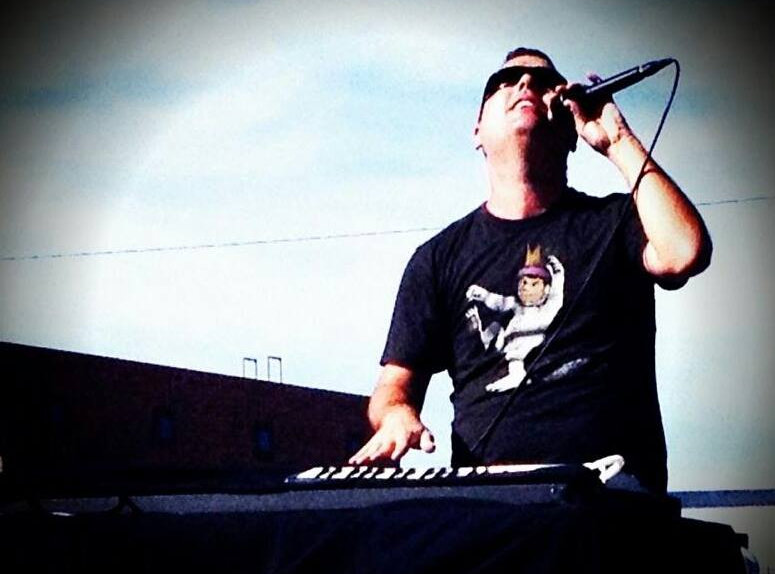 How many years have you been a professional musician, and what career path got you to where you are today?
Oh man…this could be its own article, book, mini-series! I was figuring out melodies on an old Casio keyboard my Mom had when I was little. That led to hammering out melodies on a piano, then an upright bass….then a trumpet when I got to middle school.
It was in middle school that I discovered classical music and its ridiculously rich history through the movie ‘AMADEUS.’ The year after, I joined the band and picked up a trumpet for the first time.
How many years have you been a professional musician, and what career path got you to where you are today?
Oh man…this could be its own article, book, mini-series! I was figuring out melodies on an old Casio keyboard my Mom had when I was little. That led to hammering out melodies on a piano, then an upright bass….then a trumpet when I got to middle school.
It was in middle school that I discovered classical music and its ridiculously rich history through the movie ‘AMADEUS.’ The year after, I joined the band and picked up a trumpet for the first time.
 My first year of high school I caught the "jazz bug". I listened to everything I could: Duke Ellington, Count Basie, Lester Young, Miles Davis, and Herbie Hancock. I also kept equal footing with movie scores as well: John Williams, Hanz Zimmer, and James Horner.
My first professional gig was with the Jim Fitzgerald Jazz Orchestra at the Gold Coast….New Year's Eve 1996. I still (!) have the lobby card with his autograph on it. The amount of turns, ups, downs, setbacks, and setups in this career is beyond measure, but the opportunity for self-expression and connecting with others makes it all worth it.
My first year of high school I caught the "jazz bug". I listened to everything I could: Duke Ellington, Count Basie, Lester Young, Miles Davis, and Herbie Hancock. I also kept equal footing with movie scores as well: John Williams, Hanz Zimmer, and James Horner.
My first professional gig was with the Jim Fitzgerald Jazz Orchestra at the Gold Coast….New Year's Eve 1996. I still (!) have the lobby card with his autograph on it. The amount of turns, ups, downs, setbacks, and setups in this career is beyond measure, but the opportunity for self-expression and connecting with others makes it all worth it.
 You perform under the banner of Just Alliance, much in the same way that composer Chuck Wild records as "Liquid Mind." What is the significance of the name?
You perform under the banner of Just Alliance, much in the same way that composer Chuck Wild records as "Liquid Mind." What is the significance of the name?
 Five or six years after college I got bored playing trumpet. The gigs that were around were already spoken for by players with way more experience than I had at the time and the gigs that were there weren’t gigs I knew I’d be happy with.
Upon discovering the live looping platform a friend suggested I have a moniker, perhaps one that summed up why I do music. Something honest, true, and real is a ‘just’ thing. Family, oneship, love, community, something that brings people together is an ‘alliance.’ An honest and loving thing that brings people together is music…hence "Just Alliance."
Five or six years after college I got bored playing trumpet. The gigs that were around were already spoken for by players with way more experience than I had at the time and the gigs that were there weren’t gigs I knew I’d be happy with.
Upon discovering the live looping platform a friend suggested I have a moniker, perhaps one that summed up why I do music. Something honest, true, and real is a ‘just’ thing. Family, oneship, love, community, something that brings people together is an ‘alliance.’ An honest and loving thing that brings people together is music…hence "Just Alliance."
 The console you perform on is intricate and serves many purposes. Was it custom-designed for your needs? Did you create/build it yourself?
The console you perform on is intricate and serves many purposes. Was it custom-designed for your needs? Did you create/build it yourself?
 This is rig 6.0. I have had a number of rigs before this one, but all with the same purpose: the biggest canvas to paint on, with the largest number of paints. Part of becoming essentially a ‘one-man band’ was having the ability to either play or at least inform the listener of whatever sounds you are trying to accomplish.
This is rig 6.0. I have had a number of rigs before this one, but all with the same purpose: the biggest canvas to paint on, with the largest number of paints. Part of becoming essentially a ‘one-man band’ was having the ability to either play or at least inform the listener of whatever sounds you are trying to accomplish.
 When I first started in the live looping/one-man band arena…I had ZERO gear that plugged into a wall, as my entire music career til that point was playing trumpet. Once I saw a person loop for the first time, I knew that was the flag I would serve under…without question and without looking back.
ALL of my sounds are 100% customized. I have picked each piece of my rig carefully: the mic, the effects pedals…even a custom pedalboard and table.
When I first started in the live looping/one-man band arena…I had ZERO gear that plugged into a wall, as my entire music career til that point was playing trumpet. Once I saw a person loop for the first time, I knew that was the flag I would serve under…without question and without looking back.
ALL of my sounds are 100% customized. I have picked each piece of my rig carefully: the mic, the effects pedals…even a custom pedalboard and table.
 For me to just show up and play on somebody else’s rig is impossible. It is as individual as the artists themselves. EVERY time I turn on my rig, I learn something new. Sometimes I plug in to learn, other times to escape….but every time… I learn something about myself or others.
The "Just Alliance sound" is ethereal, and a perfect soundtrack to celestial images. Which of the two was your starting point when creating STARDUST?
My sound is constantly evolving. Who I am listening to, my life experiences offstage…even the mood I am in all affect my sound. My goal has always been to have as little or as robust of a sound as needed. The sonic space STARDUST occupies was born during the COVID lockdown. I started experimenting with asymmetrical, ethereal music. Really just to see if I could do it.
For me to just show up and play on somebody else’s rig is impossible. It is as individual as the artists themselves. EVERY time I turn on my rig, I learn something new. Sometimes I plug in to learn, other times to escape….but every time… I learn something about myself or others.
The "Just Alliance sound" is ethereal, and a perfect soundtrack to celestial images. Which of the two was your starting point when creating STARDUST?
My sound is constantly evolving. Who I am listening to, my life experiences offstage…even the mood I am in all affect my sound. My goal has always been to have as little or as robust of a sound as needed. The sonic space STARDUST occupies was born during the COVID lockdown. I started experimenting with asymmetrical, ethereal music. Really just to see if I could do it.
 As a history geek, the lengths men and women have gone to to achieve spaceflight...I don’t think people really grasp the magnitude of the research and cost it has taken humankind to touch the stars.
What interests me most is space exploration on the human scale. Like which astronauts were hard to be around, the ones that loved the limelight, and why others stayed away from it. It brings all of the rockets, parades, and propulsion dynamics and boils them into very human stories.
As audience members arrive, they're treated to a presentation that combines the history of space exploration with a pop-culture timeline. What's the message there?
As a history geek, the lengths men and women have gone to to achieve spaceflight...I don’t think people really grasp the magnitude of the research and cost it has taken humankind to touch the stars.
What interests me most is space exploration on the human scale. Like which astronauts were hard to be around, the ones that loved the limelight, and why others stayed away from it. It brings all of the rockets, parades, and propulsion dynamics and boils them into very human stories.
As audience members arrive, they're treated to a presentation that combines the history of space exploration with a pop-culture timeline. What's the message there?
 So much gets lost in hyperbole and calling people ‘legends.’ They are, no doubt, but they are people first and since…and those stories really interest me and that's what I show in the ‘pre-show' to STARDUST. Even my stage clothes are informed by (not based on) the Mercury astronaut suits. They still look cutting-edge over sixty years later!
In my performance, I want to give the audience room to put their narrative into my music. That is why I have left lyrics out of the performance. I used Disneyland as a reference. Space Mountain doesn’t start when the lap bar gets pulled down, (but) the minute you hit the park. I want to provide a fully immersive experience, something that surrounds you literally and figuratively.
During the five movements that make up STARDUST, I detected possible influences from composers as varied as John Carpenter, Steve Moore, Alan Howarth, Gustav Holst, and Tangerine Dream. Who are your muses?
STARDUST owes so much to the Jazz and Classical worlds, but just as much to the Electronic and Experimental arenas. Film scores are the skeleton on which the STARDUST body resides. I tip my hat to the film score community. James Horner, Hans Zimmer, John Williams.
Deep House, Chicago House Music, World Music….man… there are so many things that inspire me. It can be a rhythm, texture, or chord progression. All of it inspires me.
[embed]https://vimeo.com/975511668[/embed]
There are a few parts of STARDUST where I highlight the loneliness of space…..the second movement is called ‘Beautiful Desolation’ for this reason. The title comes from how Buzz Aldrin described the surface of the Moon.
Oddly enough it is a combination of Hans Zimmer’s score from Interstellar, then many of Edward Hopper’s paintings...1942’s Nighthawks, 1927’s Automat, 1940’s Office At Night…..there is a tranquility to these paintings…but also a deep loneliness and quiet.
STARDUST touched my emotions in a way that POSTCARD FROM EARTH at SPHERE failed to do. I also found it to be a much more gratifying experience overall. Is there an advantage to playing for intimate audiences, or would you prefer to "go large"?
So much gets lost in hyperbole and calling people ‘legends.’ They are, no doubt, but they are people first and since…and those stories really interest me and that's what I show in the ‘pre-show' to STARDUST. Even my stage clothes are informed by (not based on) the Mercury astronaut suits. They still look cutting-edge over sixty years later!
In my performance, I want to give the audience room to put their narrative into my music. That is why I have left lyrics out of the performance. I used Disneyland as a reference. Space Mountain doesn’t start when the lap bar gets pulled down, (but) the minute you hit the park. I want to provide a fully immersive experience, something that surrounds you literally and figuratively.
During the five movements that make up STARDUST, I detected possible influences from composers as varied as John Carpenter, Steve Moore, Alan Howarth, Gustav Holst, and Tangerine Dream. Who are your muses?
STARDUST owes so much to the Jazz and Classical worlds, but just as much to the Electronic and Experimental arenas. Film scores are the skeleton on which the STARDUST body resides. I tip my hat to the film score community. James Horner, Hans Zimmer, John Williams.
Deep House, Chicago House Music, World Music….man… there are so many things that inspire me. It can be a rhythm, texture, or chord progression. All of it inspires me.
[embed]https://vimeo.com/975511668[/embed]
There are a few parts of STARDUST where I highlight the loneliness of space…..the second movement is called ‘Beautiful Desolation’ for this reason. The title comes from how Buzz Aldrin described the surface of the Moon.
Oddly enough it is a combination of Hans Zimmer’s score from Interstellar, then many of Edward Hopper’s paintings...1942’s Nighthawks, 1927’s Automat, 1940’s Office At Night…..there is a tranquility to these paintings…but also a deep loneliness and quiet.
STARDUST touched my emotions in a way that POSTCARD FROM EARTH at SPHERE failed to do. I also found it to be a much more gratifying experience overall. Is there an advantage to playing for intimate audiences, or would you prefer to "go large"?
 STARDUST is aimed to be as truthful as possible, whether played in a large venue or an intimate one. Venue size should never dictate an artist’s ability to deliver. I’ve seen as many inspired performances in backwater clubs as in stadiums.
STARDUST is aimed to be as truthful as possible, whether played in a large venue or an intimate one. Venue size should never dictate an artist’s ability to deliver. I’ve seen as many inspired performances in backwater clubs as in stadiums.
 I do a meet and greet after every show. It is as much for me as it is for the audience. I want to hear how it affected them, where their thoughts went, and their emotional journey. STARDUST is about what the audience finds in themselves by watching/listening to this journey to the edge of time and space...and how they fit into it themselves.
Much like space travel. I want the audience to experience the tranquility of space, but also the terror of “What if something goes wrong out here?” AAA doesn’t provide tow service in the asteroid belt!
During the most recent performance of STARDUST, John Allen shared news about an exciting honor:
[embed]https://vimeo.com/975924774[/embed]
I do a meet and greet after every show. It is as much for me as it is for the audience. I want to hear how it affected them, where their thoughts went, and their emotional journey. STARDUST is about what the audience finds in themselves by watching/listening to this journey to the edge of time and space...and how they fit into it themselves.
Much like space travel. I want the audience to experience the tranquility of space, but also the terror of “What if something goes wrong out here?” AAA doesn’t provide tow service in the asteroid belt!
During the most recent performance of STARDUST, John Allen shared news about an exciting honor:
[embed]https://vimeo.com/975924774[/embed]
"I am hitting the road! This month I am headlining the planetarium at the James E. Richmond Science Center for their ten-year celebration. Links for tickets are here.....see you under the stars!"

JUST ALLIANCE will be adding more performances of STARDUST to its Las Vegas schedule soon. Keep up to date by heading to the JUST ALLIANCE website here.



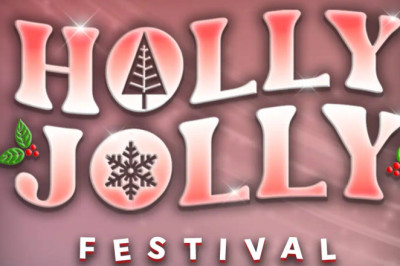
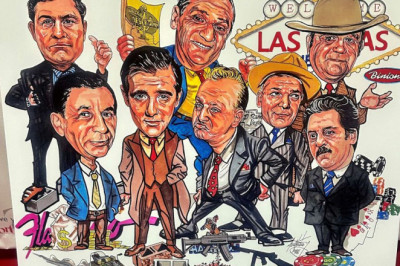

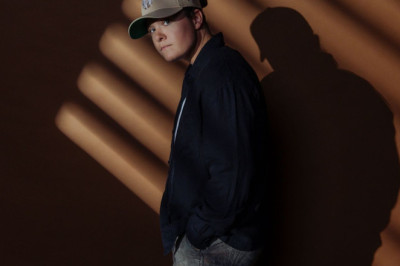

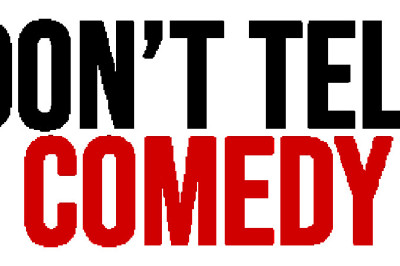




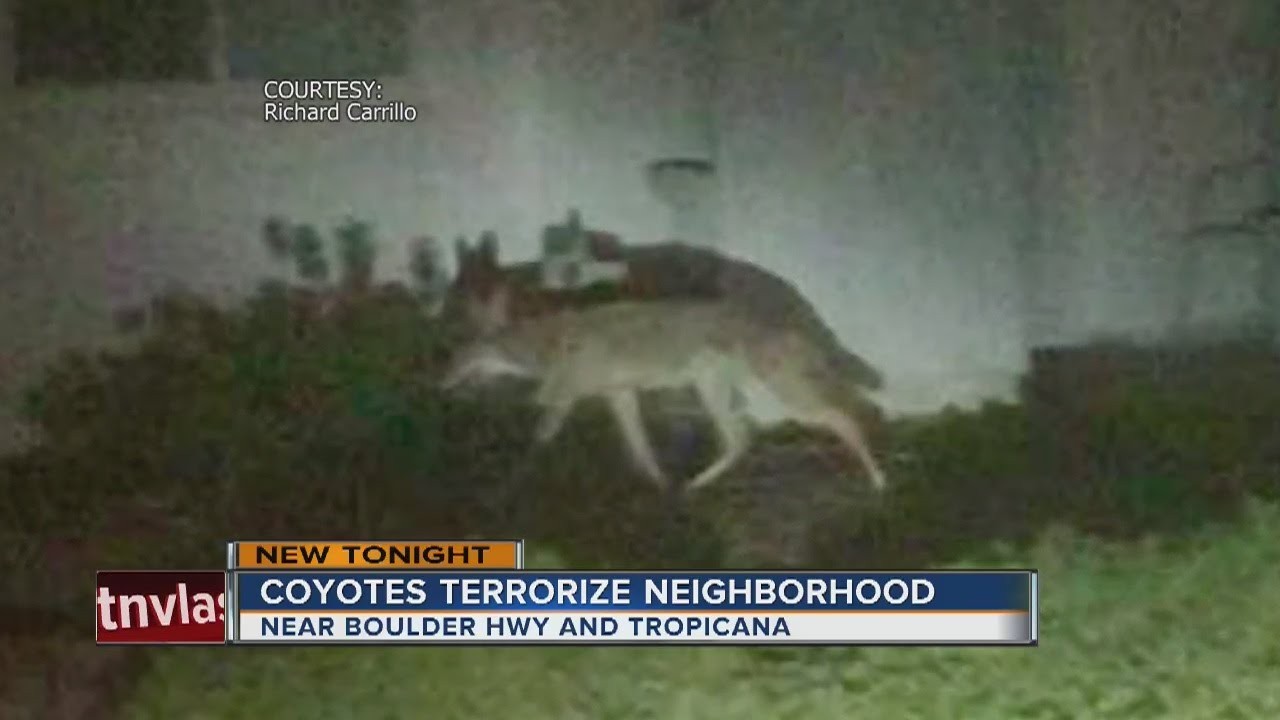
Comments
0 comment